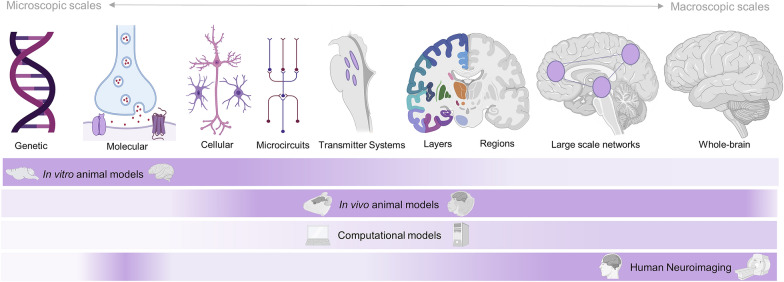Fig. 5.
Conceptual overview of levels of analysis to be considered in disorders of consciousness (DOC) research across the microscopic-to-macroscopic spectrum. Gradients indicate the capability of a technique to make measurements relevant to the level indicated above, thus highlighting gaps and possible translational interfaces. Human neuroimaging has produced macroscopic network biomarkers and certain regions/layers whose disruption is associated with DOC. For inquiries at more microscopic scale, animal models are indispensable, in which experimental manipulations (DREADD, optogenetics, lesion approaches, etc.) allow for direct mechanistic investigations, which can produce insights that can in turn be tested in humans in vivo (e.g., by using pharmacological approaches). The wider usage of high-field neuroimaging in both humans and animals will produce particularly relevant integrations of these levels, which will also serve to produce the type of data required to enable the generation of truly mechanistic computational approaches (e.g., whole-brain modeling). Altogether, these levels of analyses and models are complementary and synergistic for the discovery of the biological mechanisms of DOC

